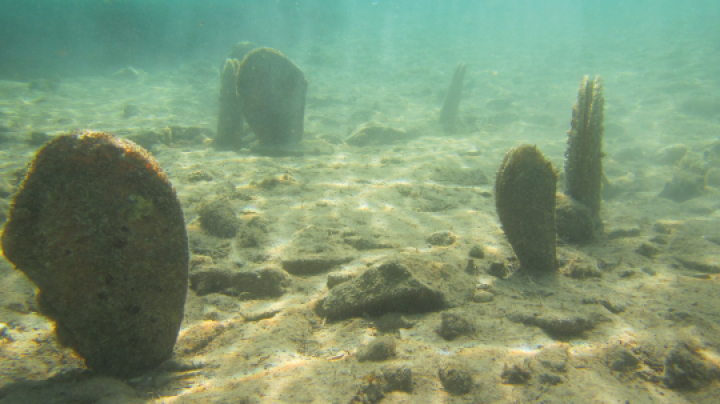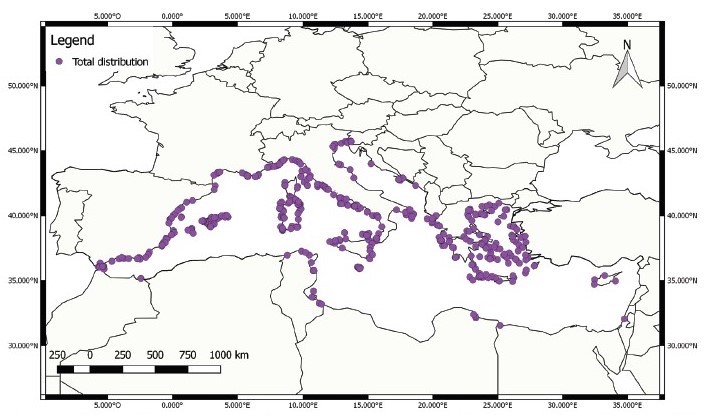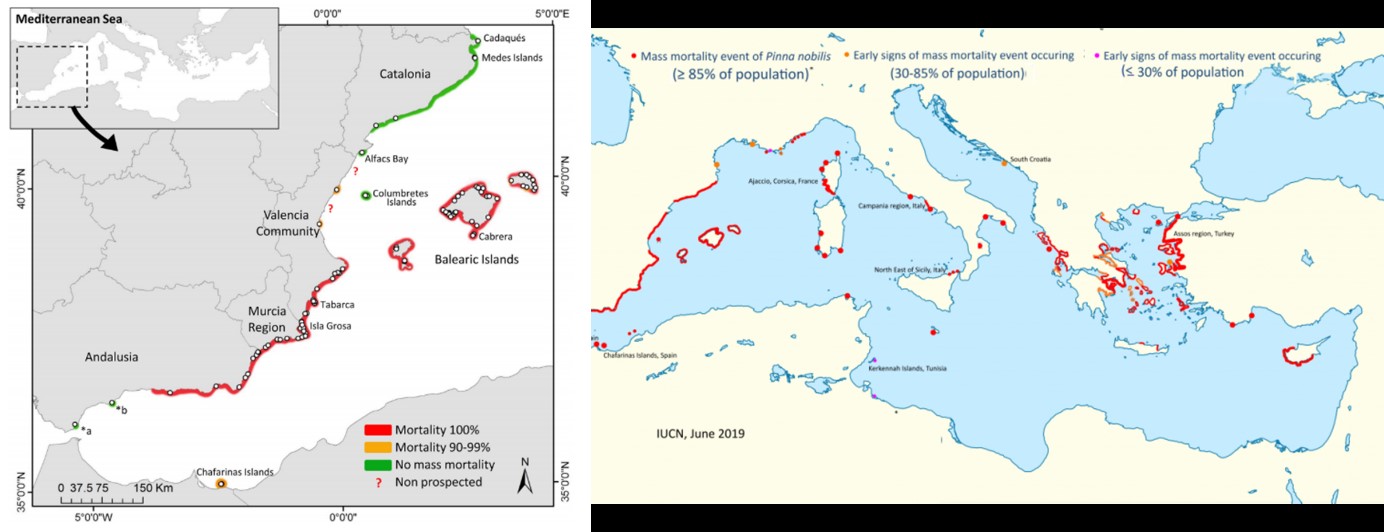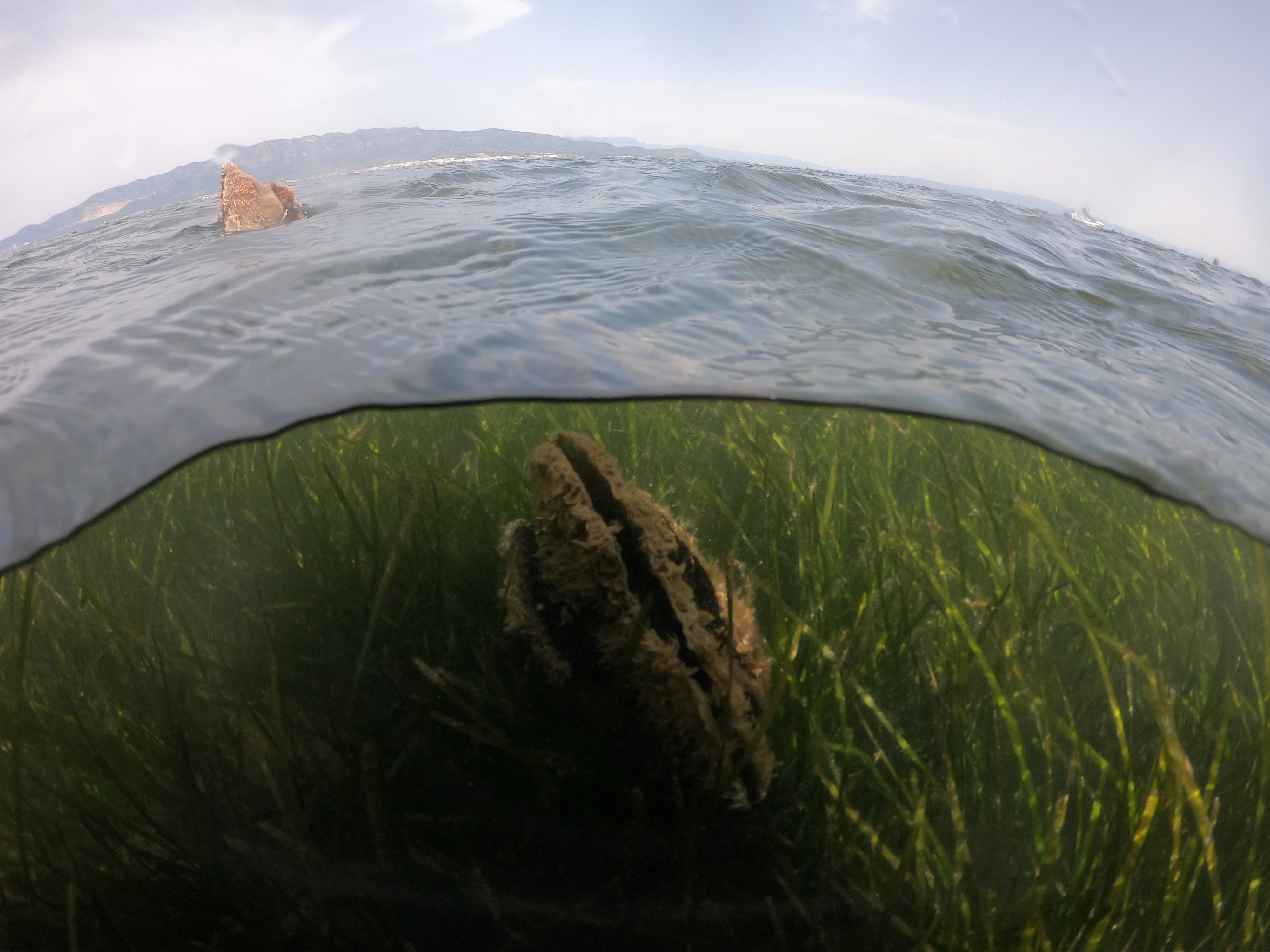
The noble pen shell (Pinna nobilis) is the largest mollusc in the Mediterranean and the second largest on the planet, measuring almost one metre in length. It is an iconic species since it is only found in the Mediterranean. However, the drastic reduction in its population due to a parasite (Haplosporidium pinnae) has led scientists to declare it an endangered species, just one year after the first mass mortalities were detected in 2016.
Where is it found?
Its habitat is the Posidonia oceanica and Cymodocea nodosa, areas of high conservation interest whose protection is enshrined in Spanish and European environmental regulations. This protection is proof that their preservation is essential for the functioning of our marine ecosystems.
Ecological importance
The noble pen shell serves essential functions within the ecosystem. It provides new habitats to benthic species, thus increasing biodiversity while lending a specific richness to the ecosystems in which it is present. As it feeds by filtering the water, it also plays a crucial ecological role by retaining large quantities of suspended organic matter, thus helping to improve water clarity.
Threats
To date, the main natural threat has been predation by certain marine species —such as the gilthead seabream (Sparus aurata) and the octopus (Octopus vulgaris)— in addition to the reduction and deterioration of its habitat, which has brought about a decline in its population. Its survival is therefore intricately linked to the impact that human beings have on these seagrass meadows, taking into account activities such as coastal works, trawling, dredging, anchoring of boats and chemical and organic pollution. The emergence of the parasite has reduced its population in the Mediterranean by more than 90% (Photo 1).
Moreover, the fact that the noble pen shell is a hermaphroditic species (it changes sex at different stages of its life), together with its low and patchy recruitment (overcoming the initial stages of development), means that its recovery is faced with serious difficulties.

In 2016, the epidemic began to spread from the Balearic Islands to Valencia due to a parasite. From there, it spread to the southern coastline of the Iberian Peninsula. While the Catalan coast appeared to have benefited from currents that made it difficult for the parasite to arrive, it was only a matter of time before it also reached these populations. The disease has since spread to France, Italy and Greece (Photo 2). At present, populations remain primarily in coastal bays. This is because the parasite is not able to enter due to the different salinity conditions. The closest examples are the Ebro Delta and the Mar Menor.
Prior to this episode, the noble pen shell was already protected under Annex IV of the Habitats Directive (92/43/EEC), which grants it strict protection, as well as Annex II of the Barcelona Convention. At the national level, it is listed as “Vulnerable” in the Spanish Catalogue of Threatened Species (RD 139/11). The change of category to “Critically Endangered” entails the obligation to carry out and incentivize research projects and activities focused on recovering this species of general interest (Article 60.2 of Law 42/2007). In 2020, the Generalitat included the noble pen shell in the list of priority conservation species.
Given the lack of control over the pathogens, and while studies on the effects of the disease and its epidemiological characteristics are ongoing, it is necessary to act directly on healthy individuals in order to maintain the species with a focus on facilitating repopulation.
.

Extracted from Vazquez-Luis et al. 2017. b). Spread of the epidemic after 2017 (Source: IUCN).

Actions
Since 2020, the Barcelona Zoo Foundation has established an agreement with the Institute of Agrifood Research and Technology (IRTA) to carry out actions that help to facilitate the conservation of noble pen shells.
These efforts focus on the rescue of healthy but settled individuals in shallow areas that are susceptible to tidal desiccation and collision with vessels. These specimens (around 2,000 according to IRTA estimates) will be “transplanted” to deeper but nearby areas in the same Alfacs Bay where they are currently found.
The carrying out of noble pen shell censuses in the two bays of the Ebro Delta has helped to ascertain the number of individuals, both dead and alive. Since the parasite cannot enter areas of low or high salinity, the physical and chemical conditions of the different parts of the bays will be characterised in order to determine, if the parasite enters the bay, the safest areas for the specimens to be moved to.
Finally, a special effort will be made to look for parasite-resistant noble pen shells in areas where they may have been previously exposed to the parasite, such as the inlets to the bay where saline conditions are more similar to those in the open sea.
This would see the Ebro Delta become a reservoir for noble pen shells. It is hoped that in the coming years, as the virulence of the epidemic drops, our knowledge will improve and more research projects will be carried out on those specimens that may be resistant to the parasites, with a view to repopulating the species in the Mediterranean.
See vídeo



